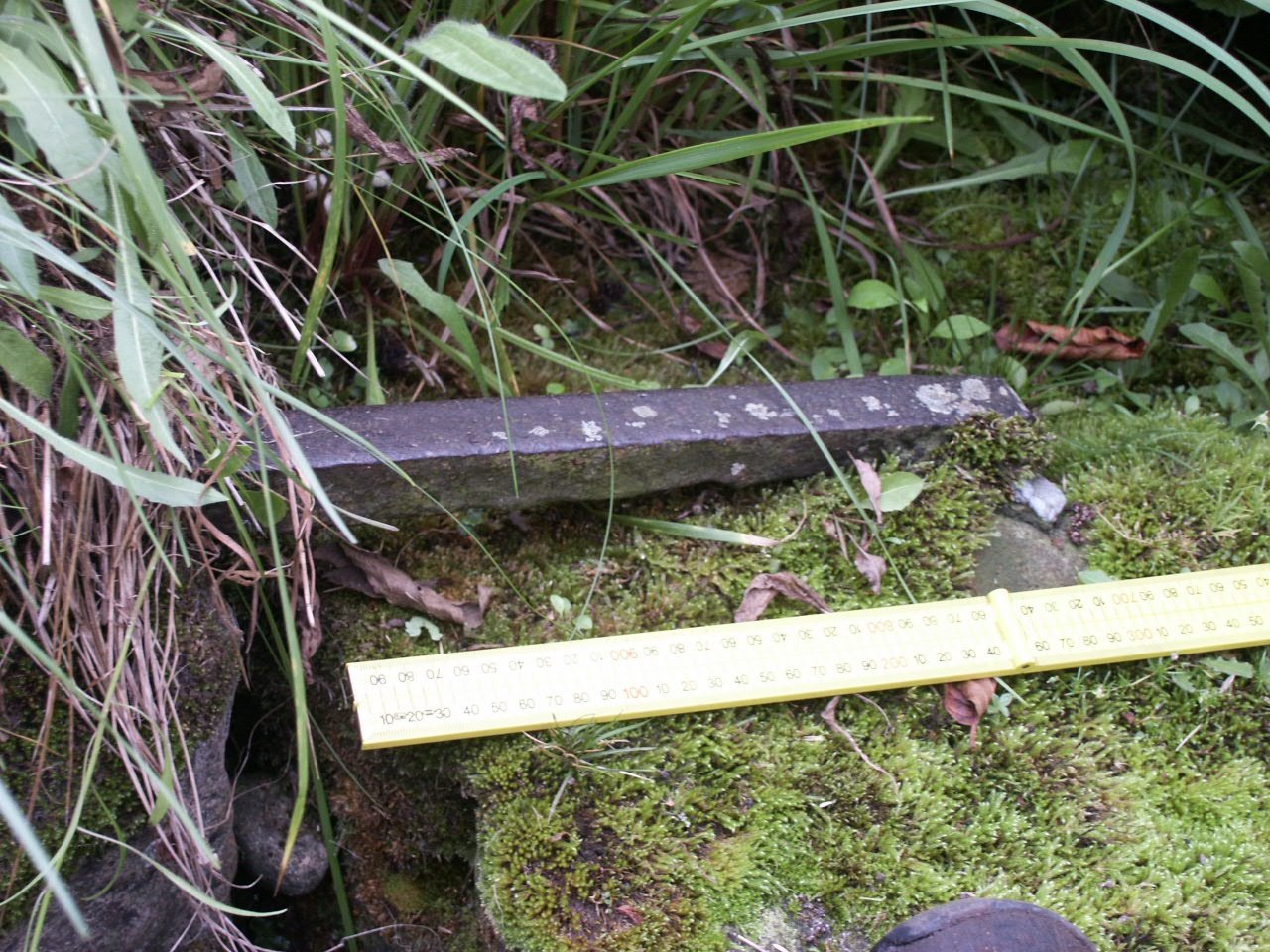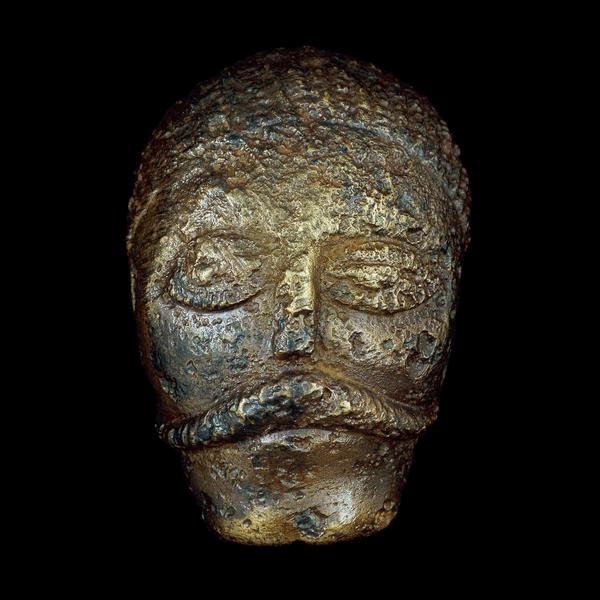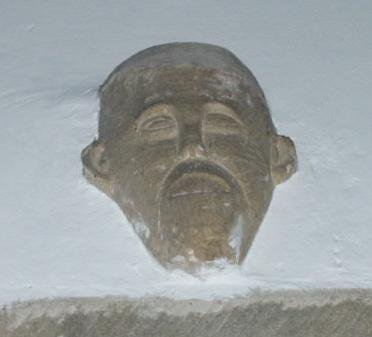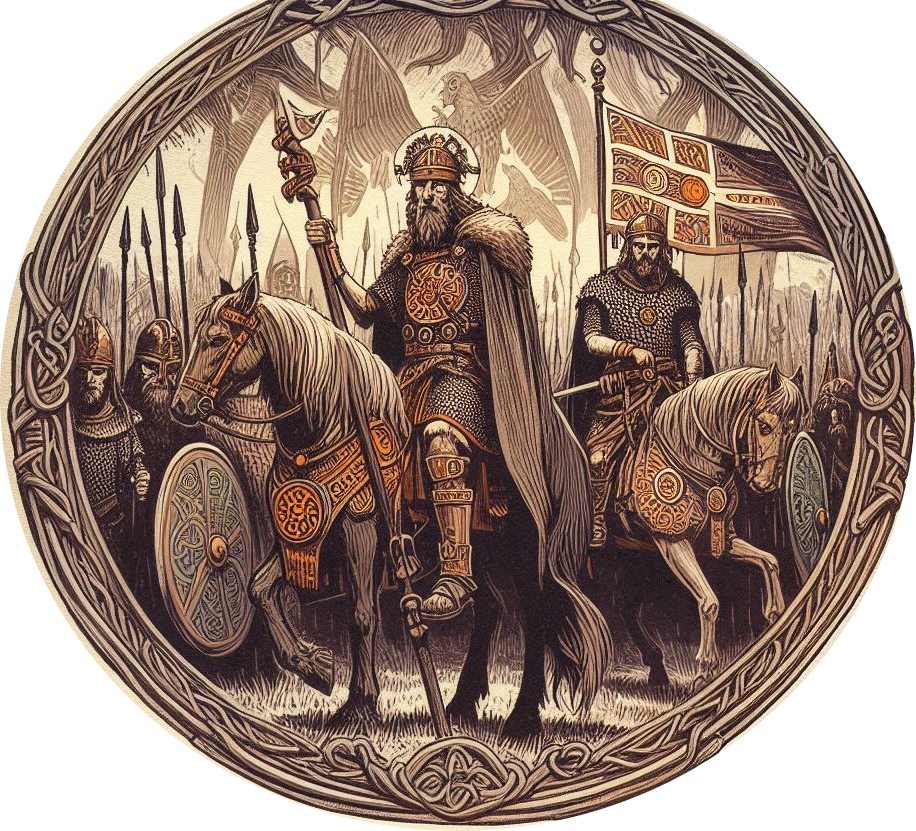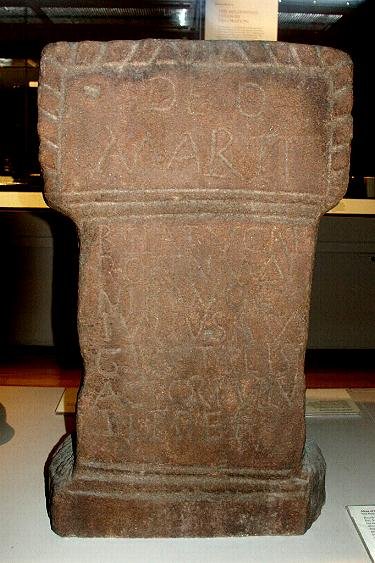The Gazetteer is organised by Counties and unitary authorities, preceded by summaries of groups of sites: frontiers or industrial areas. • Birmingham • Cambridgeshire • Cheshire • Coventry • Derby • Derbyshire • Hereford • Leicester • Leicestershire • Lincolnshire • Northamptonshire • Nottinghamshire • Oxfordshire • Peterborough • Rutland • Shropshire • Solihull • Staffordshire • Telford and Wrekin •Warwickshire • Worcestershire •
|
| BIRMINGHAM |
Metchley SP0438 |
Pre-Flavian fort of 4.4 ha with 1.8 ha annex that wa converted in the late – 1st century to a fort of 2.5 ha. Webster, G., Rome against Caratacus, London, 1993 |
| CAMBRIDGESHIRE |
Cambridge TL4459 |
Fort? or fortlet? Rodwell, W., and Rowley, T., (eds) The small towns of Roman Britain, British Archaeological Reports 15, Oxford, 1975 |
| Godmanchester TL2470 |
Pre-Flavian fort Rodwell, W., and Rowley, T., (eds) The small towns of Roman Britain, British Archaeological Reports 15, Oxford, 1975 | |
| Water Newton Durobrivae TL1290 |
Pre-Flavian fort Rodwell, W., and Rowley, T., (eds) The small towns of Roman Britain, British Archaeological Reports 15, Oxford, 1975 | |
| CHESHIRE |
Chester Deva SJ4066 |
Pre-Flavian auxiliary fort? Flavian fortress, 23 ha, occupied into the 4th century. Garrisoned by Legio II Adiutrix pia fidelis (mid 70s AD – late 80s AD), then by Legio XX Valeria Victrix (late 80s AD – 4th century)
Frere, S. S., et al, Tabula Imperii Romani: Britannia Septentrionalis, Oxford, 1987, pp22-23 |
| Christleton SJ4567 |
Temporary campPhilpott, R. A., Britannia XXIX, 1998, pp p341-353 | |
| SJ4667 | Temporary campPhilpott, R. A., Britannia XXIX, 1998, pp p341-353 | |
| SJ4466 | Temporary campPhilpott, R. A., Britannia XXIX, 1998, pp p341-353 | |
| Guilden Sutton SJ4568 |
Temporary camp, see also HoolePhilpott, R. A., Britannia XXIX, 1998, pp p341-353 | |
| SJ4367 | Temporary camp, see also HoolePhilpott, R. A., Britannia XXIX, 1998, pp p341-353 | |
| SJ4467 | Temporary camp, see also HoolePhilpott, R. A., Britannia XXIX, 1998, pp p341-353 | |
| Hoole SJ4267 |
Temporay camp, close to the Guilden Sutton groupPhilpott, R. A., Britannia XXIX, 1998, pp p341-353 | |
| Ince SJ4477 |
Fortlet, 0.4 haPhilpott, R. A., Britannia XXIX, 1998, pp p341-353 | |
| Picton SJ4270 |
Temporary camp close to the Upton groupPhilpott, R. A., Britannia XXIX, 1998, pp p341-353 | |
| Manley SJ5072 |
Temporary camp (?)Philpott, R. A., Britannia XXIX, 1998, pp p341-353 | |
| Middlewich SJ7065 |
Fort 1.2 ha Britannia XXI, 1990, pp330-1 | |
| SJ6670 | Military site? Britannia XXVI, 1995, p348 | |
| Northwich Condate SJ6573 |
Flavian fort that was succeeded by another fort during the 2nd century. This fort was later reduced in size. Britannia XVII, 1986 p387 | |
| Stamford Heath see Christleton |
||
| Upton SJ4170 |
6 temporary camps (see also Picton)Philpott, R. A., Britannia XXIX, 1998, pp p341-353 | |
| Waverton SJ4664 |
Temporary campPhilpott, R. A., Britannia XXIX, 1998, pp p341-353 | |
| COVENTRY | Baginton SP3475 |
Pre-Flavian small fortress? or fort that was succeeded by another pre-Flavian fort (1.2 ha). This was occupied until the late 1st century. The final fort may have served as equestrian training centre.Britannia XV, 1984, pp295 |
| Lunt see Baginton |
||
| DERBY | Derby Derventio SK3437 |
Pre-Flavian fort at Strutts Park abandoned by 80 AD? and succeeded by the fort below, on the other side of the river. Britannia VI, 1975, pp243-4
Two forts of c 2.8 ha at Little Chester. The sequence at Little Chester is unclear, the site of a timber fort established in the late 80s AD, was re-occupied mid/late 2nd century. Britannia XIX, 1988 pp445-6 |
| DERBYSHIRE |
Brough-on-Noe Navio SK1882 |
Flavian fort of 1.2 ha. Rebuilt with stone wall c158 AD and reduced to under 1 ha. Occupied until mid? 4th century. In the late 2nd century garrisoned by Cohors I Aquitanorum equitata. Britannia XI, 1980 pp404-5 |
| Chesterfield SK3871 |
Flavian fort of c 2.8 ha. Britannia XVI, 1985, pp282-3 | |
| Melandra Castle ?Ardotalia SK0095 |
1.2 ha Flavian fort occupied until late in the 2nd century. During the 2nd century the garrison may have included Cohors III Bracaraugustanorum and Cohors I Frisiavonum. Britannia XXII, 1991, p245 | |
| HEREFORD | Blackbush Farm SO3832 |
Fort Archaeology in Wales 29, 1989 p56 |
| Brampton Bryan SO3772 |
26.0 ha marching camp, part of a complex of sites around Leintwardine Frere, S. S., and St. Joseph, J. K., Roman Britain from the air, Cambridge, 1983 | |
| Brandon Camp see Brandon Hill |
||
| Brandon Hill SO4072 |
Neronian stores base? part of a complex of sites around Leintwardine Maxwell, G. S. and Wilson, D. R., Air reconnaissance in Britain 1977-1984, Britannia XVIII, 1987 p11 |
|
| Buckton SO3973 |
Flavian fort of 2.4 ha, followed by a fort built in stone. The site was abandoned mid 2nd century. Forms part of a complex of sites around Leintwardine.Frere, S. S., and St. Joseph, J. K., Roman Britain from the air, Cambridge, 1983 | |
| SO3873 | Temporary camp, 1.5 ha, a labour camp for the fort? Frere, S. S., and St. Joseph, J. K., Roman Britain from the air, Cambridge, 1983 | |
| Castle Field Farm SO4223 |
Fort Archaeology in Wales 29, 1989 p56 | |
| Canon Frome see Stretton Grandison |
||
| Clifford SO2446 |
Large fort succeeded? by a 6.6 ha pre-Flavian fort that may in turn have been succeeded by Clyro, Powys. Britannia XXIII, 1992, pp283 | |
| Cradley SO7147 |
Marching camp? Britannia XXIII, 1992, pp283 | |
| Ivington SO4756 |
Marching camp? Britannia XXIII, 1992, pp283 | |
| Jay Lane SO3974 |
2.0 ha fort Neronian – early Flavian. Part of a complex of sites around Leintwardine Britannia X, 1979, pp21, 23, 43-5 | |
| Kenchester Magnis SO4442 |
Pre-Flavian? fort? Webster, G., Rome against Caratacus, London, 1981, pp73-4 | |
| Leintwardine ?Branogenium SO3974 |
Antonine period fort or stores base of 4.6 ha, occupied until the 4th century. Part of a complex of sites that includes Brampton Bryan, Brandon Hill, Buckton, Jay Laneand Walford Britannia XIII, 1982, pp360-1 | |
| Stretton Grandison SO6443 |
2.1 ha pre-Flavian? fort Britannia I, 1970, p189 | |
| Tedstone Wafer SO6760 |
0.5 ha fortlet? Journal of Roman Studies XLV, 1955, p88 | |
| Walford SO3972 |
9.7 ha marching camp. Part of a complex of sites around Leintwardine Frere, S. S., and St. Joseph, J. K., Roman Britain from the air, Cambridge, 1983 | |
| LEICESTER |
Leicester Ratae Corieltauvorum SK5804 |
Fortress or fort? Finds of legionary equipment? together with a short stretch of military ditch found to the west of the Jewry Wall. Mellor, J. E., Excavations in Leicester 1965-8 , Transactions of the Leicester Archaeology Society XLIV, 1969
Hassall, M., Pre-Hadrianic legionary dispositions in Roman Fortresses and their legions, ed Brewer, London & Cardiff 2000 |
| LEICESTERSHIRE | Wigston Parva Venonis SP4689 |
0.7 ha Claudian fort, pre-dates the Fosse Way that crosses the site Webster, G., The military situation in Britain between 43 AD and 71, Britannia I, pp179- |
| LINCOLNSHIRE | Ancaster SK9843 |
Pre-Flavian fort? Britannia II, 1971, pp257 |
| SK9744 | 11.3 ha marching camp Welfare, H, and Swan, V., Roman Camps in England, London, 1995 | |
| Horncastle Banovalium? TF2569 |
Fort? Todd, M., The Coritani, London, 1973 | |
| Lincoln Lindum SK9771 |
Pre-Flavian? small fortress? 1.5 km to the south of the fortress? 16.6 ha legionary fortress built by Legio IX Hispana in the early 60s AD,. They were succeeded by the Legio II Adiutrix pia fidelis in the early 70s AD. The fortress was abandoned at the end of the 1st century.
Frere, S. S., et al Tabula Imperii Romani: Britannia Septentrionalis, Oxford, 1987, pp50-1 |
|
| Marton SK8382 |
0.8 ha pre-Flavian fort Journal of Roman Studies LXVII, 1977, p129 | |
| Newton on Trent SK8273 |
Pre-Flavian fortress 10.7 ha, garrison likely to have been Legio IX Hispana. Britannia XXIV, 1993, pp187-9
Two marching camps Welfare, H., and Swan, V., Roman Camps in England: the field archaeology, London, 1995 |
|
| NORTHAMPTONSHIRE | Irchester SP9166 |
Fort?Brown (ed) Roman Small Towns in Eastern England and beyond, Oxbow, 1995, p25 |
| NOTTINGHAMSHIRE |
Bawtry SK6592 |
Fort or fortlet, 0.4 ha, 4th century Journal of Roman Studies XLIII, 1953, pp87 and 114 |
| Broxtowe SK5242 |
Pre-Flavian? fortress of 12.0 ha, possibly garrisoned by Legio IX Hispana. Fort? of c4.8 ha
Whitwell, J. B., The Coritani: some aspects of the Iron Age tribe and their Roman civitas (BAR British Series 99), Oxford, 1982 |
|
| Calverton SK6150 |
Two marching camps, 8.5 ha and 1.6 ha. Welfare, H., and Swan, V., Roman Camps in England: the field archaeology, London, 1995 | |
| East Stoke Ad Pontem SK7650 |
Pre-Flavian fortlet of 0.5 ha. Pre-Flavian supply depot, 2.0 ha. Possibly contemporary with the fortlet.
Frere, S. S. and St. Joseph, J. K., Roman Britain from the air, Cambridge, 1983, pp177-180 |
|
| Farnsfield SK6355 |
3.9 ha marching camp Welfare, H., and Swan, V., Roman Camps in England: the field archaeology, London, 1995 | |
| Gleadthorpe Plantation SK5970 |
3.3 ha marching camp Welfare, H., and Swan, V., Roman Camps in England: the field archaeology, London, 1995 | |
| Holme SK8159 |
9.3 ha marching camp Welfare, H., and Swan, V., Roman Camps in England: the field archaeology, London, 1995 | |
| Osmanthorpe SK6856 |
Pre-Flavian? small fortress of 8.0 ha. The garrison may have included Legio IX Hispana. Bishop, M. C. and Freeman, P. W. M., Britannia XXIV, 1993, pp159-9 | |
| Thorpe see East Stoke |
||
| Warsop See Gleadthorpe Plantation |
||
| OXFORDSHIRE |
Alchester SP5720 |
Temporary camp and fort(s). The suggested sequence is: camp, large fort (3.8 – 8.6 ha) finally fortress. All no later than 60s AD and more likely Claudian.Sauer, E., and Crutchley, S., Bulletin of the Association for Roman Archaeology 5, 1998, pp10-12 |
| Asthall SP2810 |
Marching camp, 0.8 ha Welfare, H., and Swan, V., Roman Camps in England: the field archaeology, London, 1995 | |
| Dorchester on Thames SU5794 |
Pre-Flavian fort?Webster, G., The Roman invasion of Britain, London, 1980 | |
| PETERBOROUGH |
Longthorpe TL1597 |
Pre-Flavian fortress, garrisoned by Legio IX Hispana and auxiliaries? Whilst in use the fortress was reduced from 10.9 ha to 4.4 ha, possibly following the losses the Legion received at the hands of Boudica. Britannia V, 1974, pp1-29
Dannell, G. P., and Wild, J. P., Longthorpe II – Britannia Monograph 8, London, 1987 |
| RUTLAND |
Great Casterton TF0009 |
2.4 ha fort of Claudian age that was reduced to 2.1 ha during the early Flavian period? and abandoned c 80 AD. Todd, M., The Roman Fort at Great Casterton, Rutland, Nottingham, 1968 |
| SHROPSHIRE | Atcham SJ5509 |
Marching camp Welfare, H., and Swan, V., Roman Camps in England: the field archaeology, London, 1995 |
| Attingham SJ5509 |
8.9 ha marching camp Welfare, H., and Swan, V., Roman Camps in England: the field archaeology, London, 1995 | |
| Bromfield SO4877 |
8.5 ha marching camp. The camp may have been an aestiva, occupied for a campaign season. Welfare, H., and Swan, V., Roman Camps in England: the field archaeology, London, 1995 | |
| Brompton SO2493 |
Flavian fort of 1.8 ha. Occupied until the 1st quarter of the 2nd century. Possibly reoccuppied in the late 3rd and early 4th centuries. Britannia XVI, 1985, p285
Two or three? marching camps (15.5 ha, 5.2 ha and size unknown). Welfare, H., and Swan, V., Roman Camps in England: the field archaeology, London, 1995 |
|
| Burlington SJ7710 |
Two marching camps, 15.5 ha and 2.5 ha. Welfare, H., and Swan, V., Roman Camps in England: the field archaeology, London, 1995 | |
| Cound Hall SJ5605 |
Marching camp Welfare, H., and Swan, V., Roman Camps in England: the field archaeology, London, 1995 | |
| Craven Arms SO4383 |
Marching camp Welfare, H., and Swan, V., Roman Camps in England: the field archaeology, London, 1995 | |
| Eaton Constantine See Leighton |
||
| Ismore Coppice See Atcham |
||
| Leighton SJ5905 |
8.1 ha pre-Flavian fortress, garrisoned by Legio XIV Gemina? and auxiliary units? at the same time as Rhyn Park and before the building of the fortress at Wroxeter? Journal of Roman Studies LXVII, 1977, pp145-6 | |
| Norton SJ5609 |
13 ha marching camp | |
| SJ5709 | Marching camp Welfare, H., and Swan, V., Roman Camps in England: the field archaeology, London, 1995 | |
| Pentrehyling See Brompton |
||
| Quatt SO7388 |
Marching camp, 1.3 ha Welfare, H., and Swan, V., Roman Camps in England: the field archaeology, London, 1995 | |
| Rhyn Park SJ3037 |
17.2 ha pre-Flavian fortress, winter quarters (hiberna)?, for Legio XIV Gemina Martia Victrix? occupied at a similar time to Leighton? Succeeded by a 5.8 ha pre-Flavian fort held until the late 1st century. Frere, S. S. and St. Joseph, J. K., Roman Britain from the air, Cambridge, 1983, pp51-4 | |
| Stretford Bridge SO4284 |
1.5 ha pre-Flavian fort Journal of Roman Studies LXIII, 1973, p235
Marching camp, 13 ha (see also Craven Arms) Welfare, H., and Swan, V., Roman Camps in England: the field archaeology, London, 1995 |
|
| Uffington SJ5212 |
Marching camp of c18 ha that has two phases with the camp being either extended from or reduced to circa 16.3 ha. Welfare, H., and Swan, V., Roman Camps in England: the field archaeology, London, 1995 | |
| Upper Affcot SO4486 |
Marching camp, 6 ha? Welfare, H., and Swan, V., Roman Camps in England: the field archaeology, London, 1995 | |
| Wall Town SO6978 |
Neronian? fort, suceeded by a Flavian fort and finally by a 2nd century fort of 1.8 ha with stone defences. Transactions of the Shropshire Archaeological Society LVIII, 1965, pp8-18 | |
| Whitchurch Mediolanum SJ5441 |
Two forts? on the site, Neronian and Flavian. The site abandoned c 80 AD. The Archaeological Journal CXXV, 1968, pp193-254 | |
| Whittington SJ3530 |
15.3 ha marching camp Welfare, H., and Swan, V., Roman Camps in England: the field archaeology, London, 1995 | |
| Wroxeter Viroconium Cornoviorum SJ5607 |
2.2 ha Claudian fort, just south of the legionary fortress. Garrisoned by Cohors I Thracum equitata? Legionary fortress, 20 ha, garrisoned by Legio XIV Gemina Martia Victrix, c 55 – 67 AD and again in AD 69 when it briefly returned to Britain.
From c 75 AD to mid 80s the garrison was Legio XX Valeria Victrix and possibly retained as a depot whilst Legio XX was on campaign in Scotland (including building the fortres at Inchtuthil), and before it finally moved to its new base at Chester in 83-84 AD. Frere, S. S. et al Tabula Imperii Romani: Britannia Septentrionalis, Oxford, 1987 Hassall, M., Pre-Hadrianic legionary dispositions in Roman Fortresses and their legions, ed Brewer, London & Cardiff 2000 |
|
| SOLIHULL | Meriden SP2282 |
Fort? Britannia XX, 1989, p288-290 |
| STAFFORDSHIRE |
Chesterton SJ8348 |
Flavian fort c 2.0 ha Britannia II, 1971, p259 |
| Eaton House Pennocrucium SJ9010 |
Flavian? fort of 2.1 ha. Early 4th century road fort? Part of a complex of sites on the river Penk that includes Water Eaton and Stretton Mill.
Journal of Roman Studies LV, 1965, pp76-7 |
|
| Greensforge SO8688 |
A Claudian fort of 1.6 ha, succeeded by another fort, Claudian?, of 2.2 ha outside the perimeter of the first. | |
| SO8588 | Two marching camps, 3.3 ha and 13.2 ha | |
| SO8688 | Two marching camps, one of unknown size the other 0.4 ha | |
| SO8689 | Marching camp of unknown size See also Swindon
Frere, S. S. and St. Joseph, J. K., Roman Britain from the air, Cambridge, 1983, pp96-99 |
|
| Kinvaston See Water Eaton and Stretton Mill. |
||
| Rocester SK1139 |
Three forts on the site occupied from the Flavian to the late 2nd century. Britannia XIX, 1988, p448 | |
| Stretton Bridge see Stretton Mill |
||
| Stretton Mill SJ8911 |
Pre-Flavian fort 1.8 ha, evidence for an earlier larger fort. North Staffordshire Journal of Field Studies IV, 1964, p37 | |
| SJ8911 | Two marching camps, sizes unknown | |
| SJ9011 | Marching camp size unknown Part of a complex of sites on the river Penk see also Eaton House and Water Eaton.
Journal of Roman Studies LXVII, 1977, p128 |
|
| Swindon SO8590 |
15 ha marching camp Close to Greenforge
Journal of Roman Studies LXIII, 1973, p233 |
|
| Trent Vale SJ8643 |
Pre-Flavian fort? Britannia II, 1970, pp259-60 | |
| Wall Lectocetum SK0906 |
Three forts of possibly Claudian or more likely Neronian date.Two marching camps, 2.5 ha and size unknown
Gould, J., Letocetum: an early vexillation fortress? Britannia XXVIII, 1997, pp350-353 |
|
| SK0906 | Early 4th century road fort or defended civilian settlement?Gould, J, Britannia XXX, 1999, pp185-197 | |
| Water Eaton Pennocrucium SJ9011 |
Neronian? fortress of 7.8 ha, extended to 10.4 ha. Garrisoned by Legio XIV Gemina? Journal of Roman Studies XLVIII, 1958, p94 | |
| SJ9011 | Marching camps, 1.5 ha and 3.3 ha on Watling Street Part of a complex of sites on the river Penk see also Stretton Mill and Eaton House
Journal of Roman Studies LXVII, 1977, p128 |
|
| SJ9010 | Early 4th century road fort or defended civilian settlement?Gould, J, Britannia XXX, 1999, pp185-197 | |
| TELFORD AND WREKIN |
Duncot SJ5711 |
Pre-Flavian fort? Britannia VI, 1975, p247 |
| Redhill Uxacona SJ7211 |
A mid 1st century fort or stores base that was succeeded by a Flavian fortlet of 0.7 ha.Britannia V, 197a4, pp427-8 | |
| SJ7210 | Early 4th century road fort or defended civilian settlement?Gould, J, Britannia XXX, 1999, pp185-197 | |
| WORCESTERSHIRE |
Droitwich Salinae SO9063 pp283 |
5.0 ha Pre-Flavian? fort possibly occupied into the late 1st century Britannia IX, 1978, p439 |
| Great Comberton SO9543 |
Marching camp? Britannia XXIII, 1992, | |
| Inkberrow See Shurnock |
||
| Shurnock SP0260 |
Marching camp Welfare, H., and Swan, V., Roman Camps in England: the field archaeology, London, 1995 | |
| WARWICKSHIRE |
Alcester SP0857 |
1st century fort Webster, G., Rome against Caratacus, London, 1993 |
| Cave’s Inn Tripontium SP5379 |
Early 4th century road fort or defended civilian settlement?Frere, S. S., et al Tabula Imperii Romani: Britannia Septentrionalis, Oxford, 1986
Gould, J, Britannia XXX, 1999, pp185-197 |
|
| Mancetter Manduessedum SP3196 |
Mid 1st century, 9.0 ha fortress. Garrisoned by Legio XIV Gemina? Reduced before the Flavian period to a fort. Possibly more than one occupation period to the fort site. Britannia XV, 1984, pp295-7 | |
| SP3296 | Early 4th century road fort or defended civilian settlement?Gould, J, Britannia XXX, 1999, pp185-197 | |

